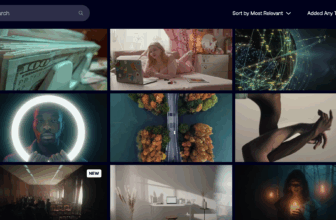
Introduction
Announced in November 2024, the new Z50 II is Nikon’s latest mirrorless camera with a cropped APS-C sensor. It replaces the original Z50 model that was released back in 2019.
Although at first glance they look very similar, there are actually a lot of differences between the two cameras in terms of their key specifications and features.
Key features offered by the Nikon Z50II include a 20.9 megapixel APS-C sensor with the latest EXPEED 7 processor, 209-point phase detection AF systems with AI subject detection, ISO range of 100-51200 that’s expandable to 204800, 30fps burst shooting with AF/AE tracking and Pre-Release Capture, 3.2 inch vari-angle LCD screen, 2360k-dot EVF, and 4K UHD video recording at up to 60p, all housed in a body that weighs less than 500g.
The new camera uses the same Z lens mount as Nikon’s larger full-frame sensor cameras, which means that it can utilise the same range of FX Z-mount lenses, albeit with a 1.5x crop factor applied.
There is also a more limited range of DX Z-mount lenses, including the 16-50mm pancake zoom that is available as a kit lens with the Z50 II.
In addition to the FX and DX Z-mount lenses, the FTZ Mount Adapter is also compatible with the Z50II, which allows F-mount DSLR lenses to be used with this new camera.
The Nikon Z50 II is available now priced at £849 / $910 body only, £999 / $1050 with the 16-50mm kit lens, or £1199 / $1299 with the 16-50mm and 50-250mm twin kit lenses. It is manufactured in Thailand.
Ease of Use

The introduction of the new Z50 II means that there are now seven full-frame and four APS-C cameras in Nikon’s mirrorless camera range.
In terms of how Nikon sees the Z50II, it sits towards the bottom of the range, just above the Z30, original Z50 and Zfc models.
Nikon are hoping to tempt people to upgrade from their smartphones or their D7000-series Nikon DSLRs with the launch of the new Z50 II, as well as suggesting it would make an ideal backup camera for Z6 and Z7 series owners.
The design of the body and controls is similar, but not identical, between the Z50 II and the Z50. It continues to resemble a Z6/7 that’s spent a long time getting shrunk in the wash.
The new Mark II version is noticeably heavier than the original though – 495g versus 395g without the battery or a memory card fitted – and it’s ever so slightly larger – 127 x 96.8 x 66.5mm versus 126.5 x 93.5 x 60mm.
Despite the weight increase, it remains a camera that you can truly carry anywhere and at all times without really noticing it, especially as the new version has a larger, even deeper handgrip that makes it easier to handle for longer periods of time.

The rubberized covering across the whole camera body adds a tactile quality that belies the Z50 II’s mid-range price-point, as does the magnesium alloy build.
The external controls are in much the same places on both cameras, grouped on the right hand side of the camera which makes one handed operation easy, except for the Info and Magnify buttons on the rear which are now positioned as on higher-end models.
One of the other main design differences is the new dedicated Picture Control button on the top-panel of the Z50 II.
Nikon’s Picture Controls are preset combinations of sharpening, contrast, brightness, saturation and hue. All 31 different Picture Controls can be tweaked to your liking, then saved and transferred to other cameras. The effects are visible in real time, and it’s easy to cycle through the different presets while shooting.
Nikon Imaging Cloud support on the Z50 II allows you to add custom Picture Controls, just like on the like Z6 III (no other cameras yet support Nikon Cloud).
The newer version has the same weather-sealing rating as the original one. While they don’t have the same level of weatherproofing as the Z6/7 series, overall the build quality feels high enough to withstand a little bit of rough and tumble, as well as coping with a variety of different weather conditions, if you take the necessary precautions.

Both models have a handy built-in pop-up flash, currently making them the only Nikon mirrorless cameras to offer this feature. This may prove useful for some fill light if you haven’t got a more powerful unit to hand.
Sadly, unlike on the Z6/Z7, there’s still no AF joystick which you can use to move focus points around the frame.
Instead you have to use the slower, less precise method of pressing the four directions on the rear d-pad to move the AF point, with a press of the OK button recentering it.
It’s also not possible to use the touch-sensitive screen to set the AF point when shooting through the viewfinder, as on some rival models (although not the Z6/7), all of which makes selecting one of the 209 AF points less intuitive than it could be.
This is a shame given that the Z50 II uses the same Expeed 7 processor as the flagship Z9 and Z8 full-frame cameras, so it provides exactly the same subject detection options and behaviour.
It provides reliable recognition of 9 subject types (people, dogs, cats, birds, airplanes, cars, motorcycles, bicycles, and trains), with an Auto mode, 3D tracking, and custom AF areas all available.

The Z50 II has an improved AF-A mode for stills, with the camera seamlessly switching to AF-C mode when detecting even the subtlest movements.
The revamped AF system is one of the main reasons to choose or upgrade from the previous Z50 model.
As well as offering a lot of advantages in terms of AF performance, the EXPEED 7 processor also boosts the number of different capture modes.
The original Z50 could shoot at a respectable 11fps with full-time autofocus and auto-exposure using the electronic shutter and a more pedestrian 5fps using the mechanical shutter.
The new Z50 II adds two faster High-speed frame capture + burst modes that provide 15fps and 30fps continuous shooting speeds, although only for JPEG files and not Raw.
The new Pre-Release Capture mode records images buffered up to one second before the shutter-release button is fully pressed when shooting in the High-Speed Frame Capture+ (C30) release mode.

The native sensitivity range of both Z50 cameras for still photos is ISO 100 to 51,200, which can be expanded to 204,800. For video the ISO range is 100-25600.
The EXPEED 7 processor in the Z50 II means that it now produces less noise at higher ISOs for cleaner images, despite using the same image sensor as the original Z50.
In addition to major improvements to auto-focus and bursts hooting, the third main area where the Z50 II outperforms its predecessor is video.
The original model offered 4K/30p and Full HD/120p recording modes, whereas the the new Z50 II offers 4K/60p, albeit with a 1.5x crop, 4K/30p oversampled from 5.6k with no crop, and Full HD/120p.
It also provides 10-bit N-Log for the first time ever on a DX camera, along with the ability to use RED Luts.
There is a red video record light on the front of the camera and a red framing border is displayed on the LCD screen when recording. It is also is the first Z camera to include a video self-timer that allows a delay before recording starts.

The Z50 II has a 2x Hi-res zoom for full HD video with 11 zoom speeds. There is no loss in resolution, unlike a digital zoom, because the camera records in 4K first then converts to 1080p.
Sound is also improved thanks to its built-in stereo mic and the option to attach an external mic, and it also offers an onboard wind-noise reduction function and a new 3.5 mm headphone socket.
The Z50 II has a special Product Review mode which smoothly shifts focus to items being showcased in the foreground of the video. This is a completely separate setting, not in the AF settings, and you can adjust the AF area/whole frame and the AF speed.
Both Z50 cameras offer Nikon’s electronic Vibration Reduction to help keep your footage nice and steady, which is important because neither of them feature in-body image stabilisation (IBIS), instead relying on the attached lens to supply it.
You can use the electronic vibration control feature on both cameras to help stabilise your video footage, but it does add a 1.3x crop. The Z50 II offers better electronic VR compared to the Z50, especially when using fast shutter speeds.
Both cameras have a 2,360k-dot electronic viewfinder, but the new 1000 cd/m2 electronic viewfinder on the Z50 II is roughly twice as bright as the EVF built into the Z50.

The brighter EVF provides a clearer view of the details even when shooting in harsh sunlight, dark environments, or changing light conditions.
The Z50 II also has a slimmer EVF that doesn’t protrude as much as on the Z50. It has a non-removable EVF cover that requires tools to remove.
The Z50 II has a larger 3.2 inch (3 inch on the Z50) LCD screen and it’s a vari-angle design which is the same as the Z6 III display. The Z50 had a less versatile 180-degree flip screen that was more suited to stills photography.
Vloggers and video streamers only need one UAC and UAV compliant cable to connect the Z50 II directly to a smart device and go live on the video platform of their choice, and you can now also use it as a webcam without having to install the Webcam utility app.
There is a single SD/SDHC/SDXC memory card slot on both cameras housed in the battery compartment on the bottom of the camera.
The older Z50 model only supported the UHS-I standard, not the newer UHS-II cards which offer faster read and write speeds – thankfully the Z50 II benefits from supporting the latter standard.
Rather annoyingly, the card slot is still in the same compartment as the battery on the bottom of the camera, rather than in a dedicated compartment on the side.

The Nikon Z50 II also uses exactly the same EN-EL25 battery as the Z50, which offers a CIPA-rated battery life of 300 shots on a single charge, with real-life usage yielding longer life.
It can be powered and charged via a USB-C connection, which is useful if you’re out and about and have a compatible power-bank to plug the camera into.
Both Wi-Fi and Bluetooth connectivity are included, primarily designed for use with Nikon’s Snapseed app.
After some early teething issues, on the whole using this app is a much more pleasant experience than when it first appeared a few years ago.
You can use it to automatically send files over to your phone for sharing online, which is useful for social media aficionados.

While it’s great to see another new DX cropped-sensor mirrorless camera from Nikon, it’s rather disheartening to observe the lack of progress in the release of new lenses for what is still a fledgeling system.
In the five years since the launch of the original Z50 which was accompanied by two DX Z-series lenses, the 16-50mm asnd 50-250mm, Nikon have seen fit to only introduce three more lenses, the 24mm prime, 12-28mm ultrawide zoom and the 18-140mm travel zoom.
So the available lenses continue to be the main weakness of buying into the Nikon APS-C sensor system, even six years after its initial launch.
Nikon still expects you to use the larger, heavier and more expensive full-frame FX lenses if you want to use anything faster than the genrally slow DX lenses., which rather negates using a smaller sensor camera in the first place.
There are some third-party lenses now available from the likes of Sigma (16mm, 30mm and 56mm F1.4 Contemporary), but they’re still few and far between.
Image Quality
All of the sample images in this review were taken using the 20.9 megapixel Fine JPEG setting, which produces an average image size of around 9Mb.
Noise
The base sensitivity of the Nikon Z50 II is ISO 100. At the other end of the scale, the highest native sensitivity is ISO 51200, but two boosted settings, ISO 102400 and ISO 204800, are also available.
File Quality
The file quality settings available on the Nikon Z50 II include Basic, Normal and Fine for JPEGs, and the camera can also shoot 12- or 14-bit NEFs (Nikon’s proprietary raw file format).
 |  |
| Basic (1.7Mb) (100% Crop) | |
 |  |
Flash
The flash settings on the Nikon D3500 are Auto, Auto with red-eye reduction, Fill-flash, Auto slow sync, Auto slow sync with red-eye correction, and Rear curtain with slow sync. These shots of a white coloured wall were taken at a distance of 1.5m.
 Flash Off – Wide Angle (24mm)
Flash Off – Wide Angle (24mm)
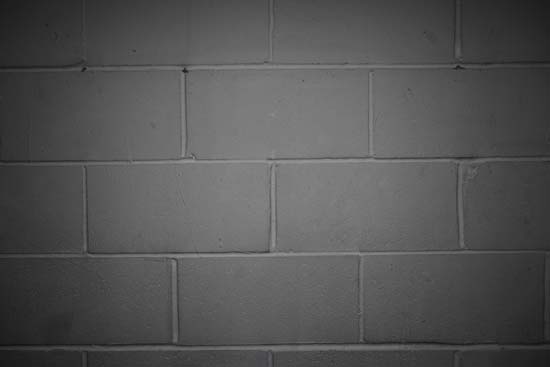 Flash On – Wide Angle (24mm)
Flash On – Wide Angle (24mm)
 Flash Off – Telephoto (75mm)
Flash Off – Telephoto (75mm)
 Flash On – Telephoto (75mm)
Flash On – Telephoto (75mm)
And here are some portrait shots. As you can see, neither the Flash On or the Red-eye-Reduction settings caused any noticeable red-eye.
 Flash On
Flash On
 Red-eye Reduction
Red-eye Reduction
Active D-lighting (ADL)
D-lighting is Nikon’s dynamic range optimisation tool that attempts to squeeze the full dynamic range of the sensor into JPEGs. Active D-lighting works “on the fly”, before the in-camera processing engine converts the raw image data into JPEGs. The available settings are Off, Low, Normal, High and Extra High, plus an Auto mode.
 Off
Off
 Low
Low
 Normal
Normal
 High
High
 Extra High
Extra High
 Auto
Auto
Picture Controls
Nikon’s Picture Controls are preset combinations of sharpening, contrast, brightness, saturation and hue. All 31 different Picture Controls can be tweaked to your liking, then saved and transferred to other cameras.
 Auto
Auto
 Standard
Standard
 Neutral
Neutral
 Vivid
Vivid
 Monochrome
Monochrome
 Flat Monochrome
Flat Monochrome
 Deep Tone Monochrome
Deep Tone Monochrome
 Portrait
Portrait
 Rich Tone Portrait
Rich Tone Portrait
 Landscape
Landscape
 Flat
Flat
Creative Picture Controls
 Dream
Dream
 Morning
Morning
 Pop
Pop
 Sunday
Sunday
 Somber
Somber
 Dramatic
Dramatic
 Silence
Silence
 Bleached
Bleached
 Melancholic
Melancholic
 Pure
Pure
 Denim
Denim
 Toy
Toy
 Sepia
Sepia
 Blue
Blue
 Red
Red
 Pink
Pink
 Charcoal
Charcoal
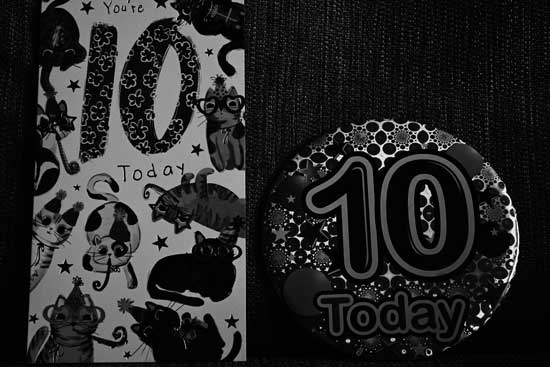 Graphite
Graphite
 Binary
Binary
 Carbon
Carbon
Sample Images
As of February 2025, we are no longer providing full size sample images or videos for download.
Please contact us if you have any feedback on our new policy.
Product Images









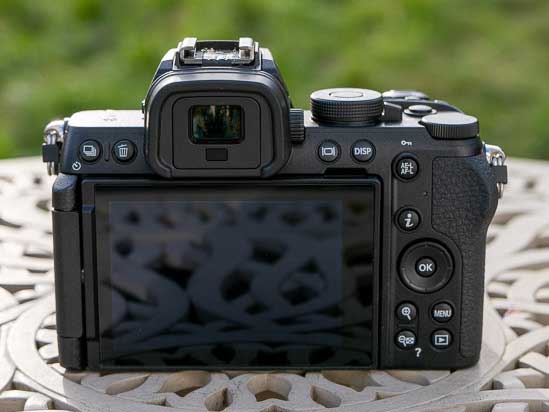


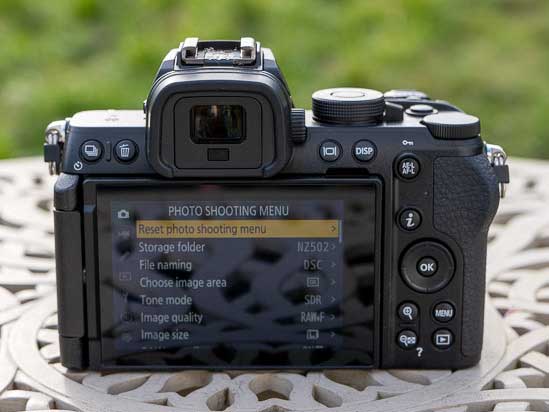

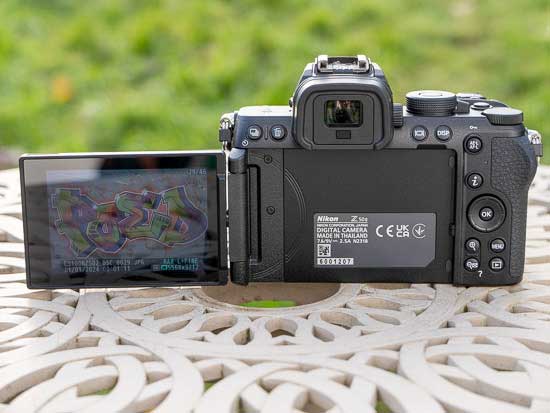




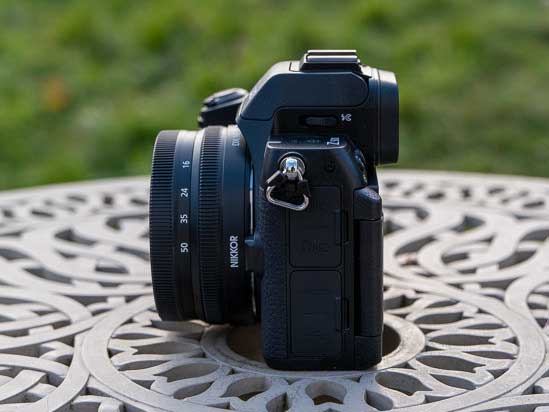




Conclusion
The new for 2024 Z50 II is a strong update of the 5 year old original model, coming across like a miniature Z6 III thanks largely to the adoption of the latest EXPEED 7 processor.
The Z50 II is more obviously targeted at vloggers and videographers than stills photographers, with almost all of the key upgrades aimed at making life easier for content creators stepping up from a smartphone.
With 4K/60p and 1080/120p modes,10-bit H.265, N-Log, a special Product Review mode, 2x Hi-res zoom and two hour recording limit on-board, the Z50 II also benefits from easy live streaming and plug-and play webcam use.
It’s very similar to the original in terms of their photography prowess, despite the 5 year gap between them, thanks to the continued use of the 20.9 megapixel APS-C sensor, so the Z50 is still worth considering if you’re more of a hybrid shooter than an out-and-out movie maker.
Having said that, the inclusion of exactly the same subject detection options and behaviour as the Z8/9, including bird recognition, along with 30fps burst shooting and handy pre-capture mode makes the cropped sensor Z50 II something of a budget birding/wildlife powerhouse.
So it’s rather disappointing to see the continued absence of an AF joystick, despite the camera undergoing a more general and largely successful control layout rejig along with an upgraded EVF and more versatile vari-angle LCD screen.
The only other notable flies in the ointment are continued from the Z50, namely the lack of in-camera image stabilisation, something that the more expensive full-frame Z6/7-series models offer, and the still very limited range of DX Z-mount lenses.
It’s now five years on from the launch of their DX format APS-C sensor camera system, and Nikon still rather inexplicably only make five native lenses. Sure, there are some third-party options available now too, but it’s clear that Nikon still see their entry-level camera system as the gateway to their full-frame FX range.
Which is a shame, because the new Z50 II is a lot more capable than its price and positioning might initially suggest, both for video and photographers alike.
Nikon have taken the brave decision to trickle down cutting-edge tech from their flagship cameras all the way down to their £849 / $910 entry-level offering – now they need to (finally) back it up with some higher-quality lens choices…
| Ratings (out of 5) | |
|---|---|
| Design | 5 |
| Features | 4.5 |
| Ease-of-use | 4.5 |
| Image quality | 4.5 |
| Value for money | 5 |
Main Rivals
Listed below are some of the rivals of the Nikon Z50 II.
The Canon EOS R10 is a tiny new mirrorless camera with an APS-C sensor that can shoot at up to 23fps and record 4K/60p video. Can the R10 compete with the likes of the Fujifilm X-S10, Nikon Z50 and Sony A6400? Find out now by reading our in-depth Canon R10 review…

Canon is back in the APS-C game with the much-anticipated launch of the EOS R7, a very capable prosumer camera with a clear focus on speed. Billed as the mirrorless successor to the much loved EOS 7D Mark II DSLR, does the new R7 have what it takes to compete against the likes of Fujifilm and Sony? Find out now by reading our in-depth Canon R7 review…

The Fujifilm X-M5 is a tiny, stylishly retro and attractively priced camera for vloggers, content creators, smartphone upgraders and stills photographers alike. Can it really meet the needs of all those users? Find out now by reading our Fuji XM5 review, complete with sample images and videos…

The new Fujifilm X-S20 aims to be a hybrid mirrorless camera for the masses, offering 6K video, 26 megapixel stills, a specific shooting mode for vloggers and long battery life, all in a small, well-built body. Is the XS20 the ultimate do-it-all camera? Find out now by reading our in-depth Fuji XS20 review complete with full-size sample images and videos.

The X-T30 II is the latest mid-range mirrorless camera from Fujifilm, boasting a 26 megapixel APS-C sensor, 4K/30p video recording, 30fps burst shooting and a stylish retro look and feel. Is the replacement for the two-year-old X-T30 worth considering? Find out now by reading our XT30 II review complete with full size sample photos…

We’ve kicked off our Fujifilm X-T50 review with sample JPEG and RAW images, product shots and more…

Nikon have introduced their second APS-C, cropped-sensor mirrorless camera with the launch of the Z fc. Almost identical to the Z50 model in terms of its key specifications, the new Z fc offers a much more retro, classic design. Read our in-depth Nikon Z fc review to find out if it’s the perfect blend of old and new…

Nikon have introduced their first APS-C, cropped-sensor mirrorless camera with the launch of the Z50, accompanied by two kit zoom lenses. Can the Z50 take on the likes of the well established Sony A6000-series and Canon EOS-M range, not to mention Fujifilm with its line-up of excellent APS-C bodies and lenses? Find out now by reading our in-depth Nikon Z50 review.

The A6700 is the new premium model in Sony’s extensive range of APS-C mirrorless cameras, but can it beat both its main rivals and its cheaper siblings? Find out now by reading our in-depth Sony A6700 review, complete with full-size sample images and videos.

Sony are attempting to turn the camera world on its head by creating a new 35mm full-frame camera that’s the same size and weight as one with a smaller APS-C sensor. Have they succeeded with the new Sony A7C, and is it a great camera in its own right? Find out now by reading our Sony A7C review complete with full-size sample photos and videos.

The Sony ZV-E10 is a new APS-C sensor mirrorless camera that’s clearly targeted at videographers, with a vari-angle screen, fast auto-focusing, three-capsule direction microphone, and a wealth of vlogger-friendly shooting modes. Is this the ultimate mirrorless camera for aspiring YouTube creators? Read our in-depth Sony ZV-E10 review to find out…
Specifications
Type
Digital camera with support for interchangeable lenses
Sensor size
23.5 mm x 15.7 mm
Total pixels
21.51 million
Dust-reduction system
Image Dust Off reference data (requires NX Studio)
Effective pixels
20.9 million
Image size (pixels)
[DX (24×16)] selected for image area:
(L) 5568 x 3712 ( 20.7 million)
(M) 4176 x 2784 ( 11.6 million)
(S) 2784 x 1856 ( 5.2 million)
[1:1 (16×16)] selected for image area:
(L) 3712 x 3712 ( 13.8 million)
(M) 2784 x 2784 ( 7.8 million)
(S) 1856 x 1856 ( 3.4 million)
[16:9 (24×14)] selected for image area:
(L) 5568 x 3128 ( 17.4 million)
(M) 4176 x 2344 ( 9.8 million)
(S) 2784 x 1560 ( 4.3 million)
File format (image quality)
NEF (RAW): 14 bit; choose from lossless compression, high efficiency (high), and high efficiency options
JPEG: JPEG-Baseline compliant with fine (approx. 1:4), normal (approx. 1:8), or basic (approx. 1:16) compression
HEIF: Supports fine (approx. 1:4), normal (approx. 1:8), or basic (approx. 1:16) compression
NEF (RAW)+JPEG: Single photograph recorded in both NEF (RAW) and JPEG formats
NEF (RAW)+HEIF: Single photograph recorded in both NEF (RAW) and HEIF formats
Picture Control System
Auto , Standard , Neutral , Vivid , Monochrome , Flat Monochrome , Deep Tone Monochrome , Portrait , Rich Tone Portrait , Landscape , Flat
Creative Picture Controls (Dream, Morning, Pop, Sunday, Somber, Dramatic, Silence, Bleached, Melancholic, Pure, Denim, Toy, Sepia, Blue, Red, Pink, Charcoal, Graphite, Binary, Carbon); selected Picture Control can be modified; storage for Custom Picture Controls
* Note: Choice of Picture Controls is restricted to Standard, Monochrome, and Flat when HLG is selected for tone mode during still photography.
Media
SD, SDHC (UHS-II compliant), SDXC (UHS-II compliant)
Card slot
1 Secure Digital (SD) card
File system
DCF 2.0
Exif 2.32
MPEG‑A MIAF
Viewfinder
1.0-cm/0.39-in., approx. 2360k-dot (XGA) OLED electronic viewfinder with color balance and auto and 13-level manual brightness controls
Frame coverage
Approx. 100% horizontal and 100% vertical
Magnification
Approx. 1.02x (50 mm lens at infinity, -1.0 m-1)
Eyepoint
19.5 mm (-1.0 m-1; from rearmost surface of viewfinder eyepiece lens)
Diopter adjustment
-3 – +3 m-1
Eye sensor
Automatically switches between monitor and viewfinder displays
Compatible lenses
Z mount NIKKOR lenses
F mount NIKKOR lenses (mount adapter required; restrictions may apply)
Shutter type
Electronically-controlled vertical-travel focal-plane mechanical shutter; electronic front-curtain shutter; electronic shutter
Shutter speed
1/4000 to 30 s (choose from step sizes of 1/3, 1/2, and 1 EV, extendable to 900 s in mode M), bulb, time
Flash sync speed
Flash synchronizes with shutter at speeds of 1/250 or 1/200 s or slower (but note that the guide number drops at speeds of 1/200 to 1/250 s); sync speeds as fast as 1/4000 s are supported with auto FP high-speed sync
Release mode
Single frame, continuous low-speed, continuous high-speed, continuous high-speed (extended), high-speed frame capture + with Pre-Release Capture, Self-timer
Approximate frame advance rate*
Up to 30 fps
Continuous low-speed: Approx. 1 to 5 fps
Continuous high-speed: Approx. 5.6 fps (when using silent mode and image quality settings other than NEF (RAW) and NEF (RAW) +: Approx. 9.7 fps)
Continuous high-speed (extended): Approx. 11 fps (in silent mode: Approx. 15 fps)
High-speed frame capture + (C15): Approx. 15 fps
High-speed frame capture + (C30): Approx. 30 fps
* Maximum frame advance rate as measured by in-house tests.
Self-timer
2 s, 5 s, 10 s, 20 s; 1 to 9 exposures at intervals of 0.5, 1, 2, or 3 s
Exposure Metering System
TTL metering using camera image sensor
Exposure Metering mode
Matrix metering
Center-weighted metering: Weight of 75% given to 8 or 6 mm circle in center of frame or weighting can be based on average of entire frame
Spot metering: Meters circle with a diameter of approximately 3.5 mm centered on selected focus point
Highlight-weighted metering
Exposure Range*
-4 to +17 EV
* Figures are for ISO 100 equivalent and f/2.0 lens at 20 °C/68 °F
Exposure Mode
Auto, P: programmed auto with flexible program, S: shutter-priority auto, A: aperture-priority auto, M: manual
Scene modes: portrait; landscape; child; sports; close up; night portrait; night landscape; party/indoor; beach/snow; sunset; dusk/dawn; pet portrait; candlelight; blossom; autumn colors; food
Exposure compensation
-5 to +5 EV (choose from step sizes of 1/3 and 1/2 EV)
Exposure lock
Luminosity locked at detected value
ISO sensitivity (Recommended Exposure Index)
ISO 100 to 51200 (choose from step sizes of 1/3 and 1 EV); can also be set to approx. 0.3, 0.7, 1, or 2 EV (ISO 204800 equivalent) above ISO 51200; auto ISO sensitivity control available
* Note: ISO sensitivity is limited to 400 to 51200 when HLG is selected for tone mode.
Active D-Lighting
Auto, Extra high, High, Normal, Low, and Off
Multiple exposure
Add, average, lighten, darken
Other options
HDR overlay, photo mode flicker reduction, high-frequency flicker reduction
Autofocus system
Hybrid phase-detection/contrast AF with AF assist
Detection range*
-9 to +19 EV
* Measured in photo mode at ISO 100 equivalent and a temperature of 20 °C/68 °F using single-servo AF (AF-S) and a lens with a maximum aperture of f/1.2
Lens servo
Autofocus (AF):
Single-servo AF (AF-S) , continuous-servo AF (AF-C) , AF mode auto-switch (AF-A, photo mode only) , full-time AF (AF-F, video mode only) , predictive focus tracking
Manual focus (M):
Electronic rangefinder can be used
Focus point*
209 focus points (single-point AF), 231 focus points (auto-area AF)
* Number of focus points available in photo mode with DX selected for image area
AF-area mode
Pinpoint (available in photo mode only), single-point, dynamic-area (S, M, and L; available in photo mode only), wide-area (S, L, C1, and C2), and auto-area AF; 3D-tracking (available in photo mode only); subject-tracking AF (available in video mode only)
Focus lock
Focus can be locked by pressing shutter-release button halfway (single-servo AF/AF-S) or by pressing the AE-L/AF-L button
Built-in flash
Manual pop-up flash raised via flash pop-up control
Guide number
Approx. 7/22, 7/22 with manual flash (m/ft, ISO 100, 20 °C/68 °F)
Flash control
TTL: i-TTL flash control; i-TTL balanced fill-flash is used with matrix, center-weighted, and highlight-weighted metering, standard i-TTL fill-flash with spot metering
Flash modes
Fill flash, red-eye reduction, slow sync, slow sync + red-eye, rear-curtain sync, auto, auto + red-eye reduction, auto slow sync, auto slow sync + red-eye, flash off
Flash compensation
-3 to +1 EV (choose from step sizes of 1/3 and 1/2 EV)
Flash-ready indicator
Lights when built-in flash or optional flash unit is fully charged; flashes as underexposure warning after flash is fired at full output
Accessory shoe
ISO 518 hot-shoe with sync and data contacts and safety lock
Nikon Creative Lighting System (CLS)
i-TTL flash control, optical Advanced Wireless Lighting, FV lock, Color Information Communication, auto FP high-speed sync
White balance
Auto (3 types), natural light auto, direct sunlight, cloudy, shade, incandescent, fluorescent (3 types), flash, choose color temperature (2500 to 10,000 K), preset manual (up to 6 values can be stored), all with fine-tuning
Bracketing types
Exposure and/or flash, white balance, ADL
Other options for still photography
Vignette control, diffraction compensation, auto distortion control, skin softening, portrait impression balance, and interval-timer, and focus-shift photography
Video Metering system
TTL metering using camera image sensor
Video Metering mode
Matrix, center-weighted, or highlight-weighted
Video Frame size (pixels) and frame rate
- 3840 x 2160 (4K UHD): 60p/50p/30p/25p/24p
- 1920 x 1080: 120p/100p/60p/50p/30p/25p/24p
- 1920 x 1080 slow-motion: 30p (x4)/25p (x4)/24p (x5)
Note: Actual frame rates for 120p, 100p, 60p, 50p, 30p, 25p, and 24p are 119.88, 100, 59.94, 50, 29.97, 25, and 23.976 fps respectively.
Video File format
MOV, MP4
Video compression
H.265/HEVC (8 bit/10 bit), H.264/AVC (8 bit)
Audio recording format
Linear PCM (48 KHz, 24 bit, for videos recorded in MOV format) , AAC (48 KHz, 16 bit, for videos recorded in MP4 format)
Audio recording device
Built-in stereo or external microphone can be used; sensitivity adjustable; attenuator, frequency response, and wind noise reduction functions
Video Exposure compensation
-3 to +3 EV (choose from step sizes of 1/3 and 1/2 EV)
Video ISO sensitivity (Recommended Exposure Index)
Mode M: Manual selection (ISO 100 to 25600; choose from step sizes of 1/6, 1/3 and 1 EV); auto ISO sensitivity control (ISO 100 to 25600) available with selectable upper limit
* Note: ISO sensitivity is limited to 400 to 25600 when HLG is selected for tone mode.
* Note: ISO sensitivity is limited to Lo 0.3 to 2.0 and 800 to 25600 when N-Log is selected for tone mode.
Modes P, S, A: Auto ISO sensitivity control (ISO 100 to 25600) with selectable upper limit
Modes Auto, SCN: Auto ISO sensitivity control (ISO 100 to 25600)
Video Active D-Lighting
Extra high, High, Normal, Low, and Off
Other options
Time-lapse video recording, electronic vibration reduction, time codes, REC lamp, N-Log and HDR (HLG) video, wave-form display, red REC frame indicator, video recording display zoom (50%, 100%, 200%, and 400%), extended shutter speeds (modes S and M), option to view video recording info available via i menu, and Hi-Res Zoom
Monitor size
8 -cm ( 3.2 –in.) diagonal
Monitor type
Vari-angle TFT touch-sensitive LCD with 170° viewing angle, approximately 100% frame coverage, and color balance and 13-level manual brightness controls
Monitor resolution
Approx. 1040 k-dot
Playback
Full-frame and thumbnail (up to 4, 9, or 72 pictures) playback with playback zoom, playback zoom cropping, video playback, slide shows, histogram display, highlights, photo information, location data display, auto picture rotation, picture rating, filtered playback, voice memo recording and playback, IPTC information embedding and display, skip to first shot in series, series playback, save consecutive frames, and motion blend
USB connector
Type C USB connector (SuperSpeed USB); connection to built-in USB port is recommended
HDMI output connector
Type D HDMI connector
External audio input
Stereo mini-pin jack (3.5 mm diameter; plug-in power supported)
Audio output/remote cord
Stereo mini-pin jack (3.5 mm diameter)
MC-DC3 Remote Cord can be used.
* Auto switch between headphone and remote cord is available.
Wi-Fi “NIJ”
Standards:
EEE802.11b/g/n/a/ac
Operating frequency:
2412 to 2472 MHz (13ch), 5180 to 5700 MHz
Maximum output power (EIRP):
2.4 GHz band: 4.6 dBm
5 GHz band: 5.3 dBm
Authentication:
Open system, WPA2-PSK, WPA3-SAE
Wi-Fi “NICS”
Standards:
EEE802.11b/g/n/a/ac
Operating frequency:
2412 to 2472 MHz (13ch), 5180 to 5320 MHz and 5745 to 5825 MHz
Maximum output power (EIRP):
2.4 GHz band: 4.6 dBm
5 GHz band: 5.3 dBm
Authentication:
Open system, WPA2-PSK, WPA3-SAE
Wi-Fi “NIKC”
Standards:
EEE802.11b/g/n/a/ac
Operating frequency:
2412 to 2472 MHz (13ch), 5180 to 5700 MHz and 5745 to 5825 MHz
Maximum output power (EIRP):
2.4 GHz band: 4.6 dBm
5 GHz band: 5.3 dBm
Authentication:
Open system, WPA2-PSK, WPA3-SAE
Wi-Fi “Others”
Standards:
IEEE 802.11b/g/n/a/ac (Africa, Asia, Europe, Oceania, U.S.A., Canada, and Mexico)
IEEE 802.11b/g/n/a (other countries in the Americas)
Operating frequency:
Asia, Africa (excluding the countries listed below), the Middle East (excluding the countries listed below), Guam, New Caledonia, and Tahiti: 2412 to 2462 MHz (channel 11) and 5745 to 5805 MHz
Europe, Cyprus, Israel, Turkey, Algeria, Egypt, Morocco, and the Republic of the Congo: 2412 to 2462 MHz (channel 11) and 5180 to 5320 MHz
India: 2412 to 2472 MHz (channel 13) and 5180 to 5825 MHz (5180 to 5700 MHz and 5745 to 5825 MHz)
U.S.A., Canada, Mexico, Australia, New Zealand, and the Republic of Fiji: 2412 to 2462 MHz (channel 11) and 5180 to 5825 MHz (5180 to 5580 MHz, 5660 to 5700 MHz, and 5745 to 5825 MHz)
Other countries in the Americas: 2412 to 2462 MHz (channel 11) and 5180 to 5805 MHz (5180 to 5320 MHz and 5745 to 5805 MHz)
Maximum output power (EIRP):
2.4 GHz band: 4.6 dBm
5 GHz band: 5.3 dBm
Authentication:
Open system, WPA2-PSK, WPA3-SAE
Bluetooth
Communication protocols:
Bluetooth Specification Version 5.0
Operating frequency:
Bluetooth: 2402 to 2480 MHz
Bluetooth Low Energy: 2402 to 2480 MHz
Maximum output power (EIRP):
Bluetooth: -0.9 dBm
Bluetooth Low Energy: -2.4 dBm
Battery
One EN-EL25a rechargeable Li-ion battery*
* EN-EL25 batteries can also be used. Note, however, that fewer pictures can be taken on a single charge than with the EN-EL25a.
AC adapter
EH-8P AC adapters (available separately); supplied UC-E25 USB cable required
Tripod socket
0.635 cm (1/4 in., ISO 1222)
Dimensions (W x H x D)
Approx. 127 x 96.8 x 66.5 mm (5 x 3.9 x 2.7 in.)
Weight
Approx. 550 g ( 1 lb. 3.4 oz. ) with battery and memory card but without body cap; approx. 495 g/1 lb. 1.5 oz. (camera body only)
Operating Environment
Temperature: 0 °C to 40 °C (+32 °F to 104 °F)
Humidity: 85% or less (no condensation)
Supplied accessories
BF-N1 Body Cap, EN-EL25a Rechargeable Li-ion Battery, AN-DC29 Strap, UC-E25 USB Cable
Your Comments
Credit : Source Post



